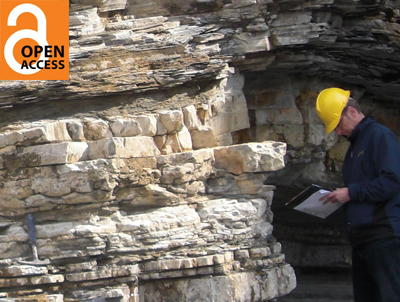Interpreting the Carbon Isotope Record of Mass Extinctions
Mass extinctions are global-scale environmental crises marked by the loss of numerous species from all habitats. They often coincide with rapid changes in the stable carbon isotope ratios (13C/12C) recorded in sedimentary carbonate and organic matter, ratios which can indicate substantial inputs to the surface carbon reservoirs and/or changes in the cycling of carbon. Models to explain these changes have provided much fuel for debate on the causes and consequences of mass extinctions. For example, the escape of methane from gas hydrate deposits or the emission of huge volumes of gaseous carbon from large-scale volcanic systems, known as large igneous provinces, may have been responsible for decreases of 13C/12C in sedimentary deposits. In this article, we discuss the challenges in distinguishing between these, and other, alternatives.
Interpreting the Carbon Isotope Record of Mass Extinctions Read More »


